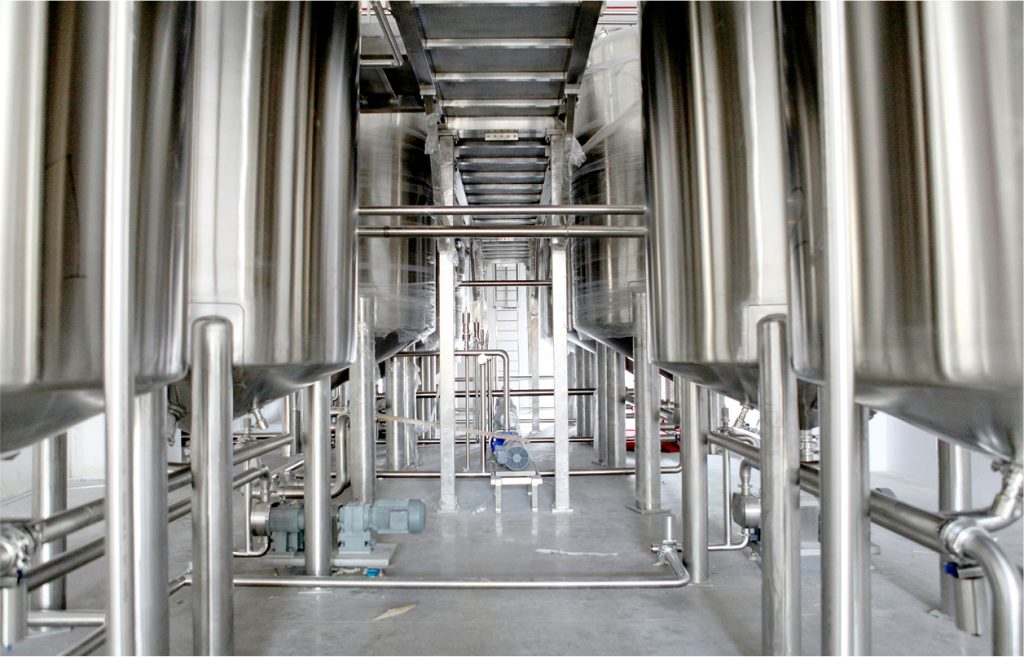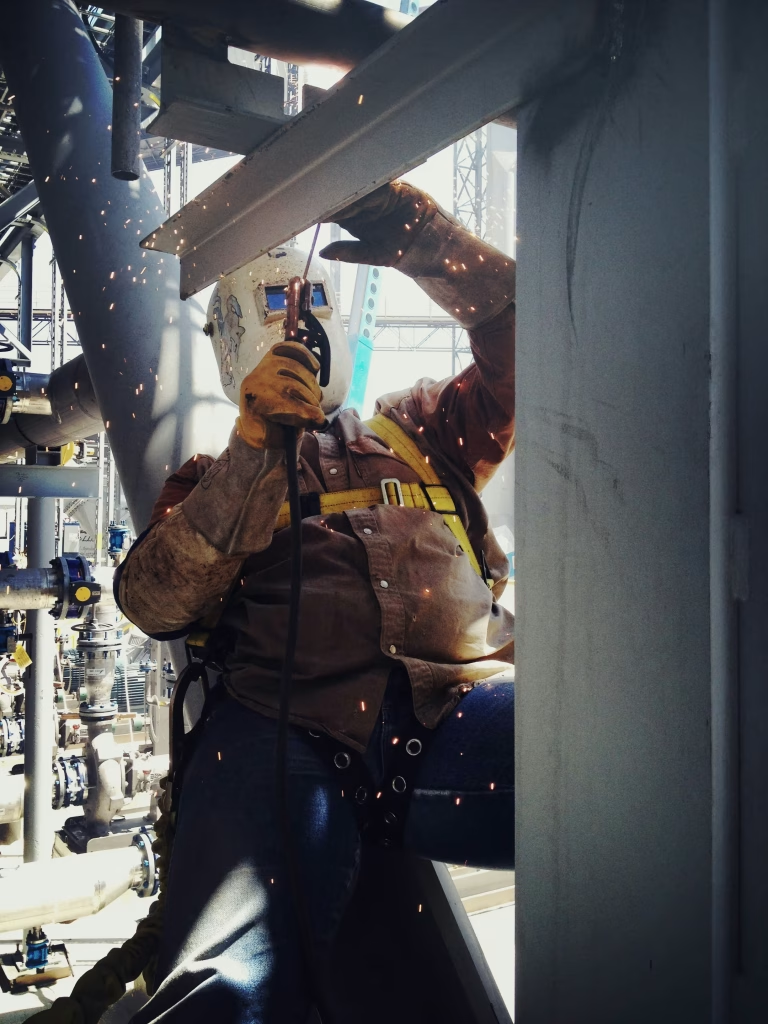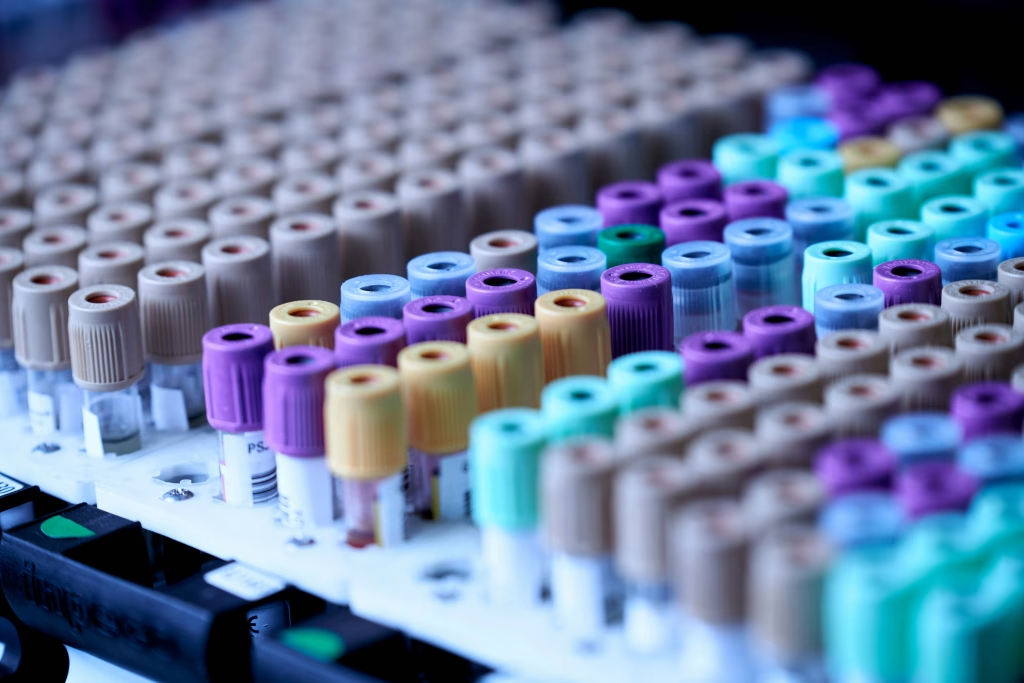
Section 2.3
Scale U.S. Innovations
Chapter 02
Section 2.3
2.3A
Congress must authorize and fund the Department of Energy (DOE) and the Department of Commerce (DOC) to develop a network of manufacturing facilities across the country for precommercial bioindustrial product scale-up.
2.3B
Congress should direct the Department of Commerce (DOC) to create a public-private biopharmaceutical manufacturing center of excellence focused on developing and scaling new ways to make medicines.
For U.S. biotechnology innovators, the biggest roadblock to commercialization is proving that their products and processes can scale, thus showing investors a path to financial return. The breadth of products that biotechnology can make translates into a broad range of infrastructure needed to make them, including facilities, equipment, and manufacturing processes. The United States faces two main challenges to securing this infrastructure.
First, the United States lacks biomanufacturing capacity.165 Researchers are generating new products faster than manufacturing capacity is increasing. Building new facilities is expensive and time-consuming. Precommercial facilities can cost $100-200 million—while facilities for commercial scale can take two to five years to build and prepare and cost up to $2 billion.166
As a result, American companies, particularly early-stage ones, mainly use overseas manufacturing capacity to scale processes for commercialization during the initial stage of bringing a product to market, and a number of foreign governments are investing billions to create even more biomanufacturing infrastructure.167
Second, biomanufacturing technologies of the future have yet to mature into routine commercial applications. Today’s biomanufacturing facilities are generally optimized for one type of product and are usually not compatible with other products.168 A facility designed to make vaccines, for example, cannot easily pivot to making chemicals without a major retrofit. Building more of this bespoke, traditional capacity will not translate into making a wider range of products under one roof.
Manufacturing innovations that are under development, such as greater automation and continuous manufacturing (a process by which inputs are continuously fed into a system, as opposed to made in batches), could change the paradigm for biomanufacturing. These innovations could lead to smaller, less expensive facilities that use modular equipment and cleanrooms to manufacture products at lower cost while using less energy. Despite early signs of promise, both the bioindustrial and biopharmaceutical sectors have been slow to develop and adopt these technologies, primarily because of concerns that they might pose regulatory risk and not recoup their capital investments.
To create the biomanufacturing infrastructure of the future in the United States, Congress should invest in the science of biomanufacturing scale-up, undertake biomanufacturing grand challenges (see Section 4.3b and Appendix D for more detail), create data-sharing platforms and artificial intelligence/machine learning (AI/ML) tools to accelerate biomanufacturing design (see 4.1a and 4.3c), and support domestic precommercial facilities that integrate expanding state-of-the-art infrastructure to help innovators mature their technologies. In addition, there are other government entities responsible for supporting commercial-scale manufacturing capacity, such as the DOE’s Loan Programs Office and the Administration for Strategic Preparedness and Response (ASPR) BioMap Consortium.
Taken together, these actions would advance American leadership and bolster local economies, all while minimizing long-term federal spending.
Recommendation
2.3A
Recommendation 2.3A
Congress must authorize and fund the Department of Energy (DOE) and the Department of Commerce (DOC) to develop a network of manufacturing facilities across the country for precommercial bioindustrial product scale-up.
The United States has many favorable conditions for scaling industrial biotechnology, including its abundant feedstocks, reliable utilities, extensive transportation infrastructure, and proximity to consumers. But even so, companies tend to do their scale-up abroad.169
Congress must authorize the DOC and the DOE to create facilities that companies and researchers can use to prove that their lab inventions work at pilot and demonstration scale before moving to full commercial scale production. This effort should include expanding existing DOE facilities and building new facilities. (See Section 3.2 for recommendations to address biomanufacturing for the Department of Defense (DOD).)
Congress should require the DOE and the DOC, in collaboration with the NBCO (see recommendation 1.1a), to lay out a strategy to create a network of new precommercial facilities across the country for scaling up bioindustrial products. This network should integrate next-generation techniques (see Section 4.3c) and data-sharing platforms (see Section 4.1a).

These precommercial facilities should be designed as user facilities. Their operating models and capabilities should align with the needs of their customers, whether they be from industry or from other government entities such as a National Lab. Charging fees for certain users would also ensure financial viability through cost-sharing with the private sector, prevent operational dependence on a single company’s success, and provide regular feedback regarding the effectiveness of these scale-up facilities. If the facilities are not meeting their needs, companies would not pay for access and the facility would be forced to adjust. This setup would ensure the government does not finance large-scale biomanufacturing facilities that no one uses.
As a promising example, policymakers should look to the Bio Based Europe Pilot Plant (BBEPP) in Ghent, Belgium, a user facility that was capitalized with contributions from the European Union and the local government but whose operations are funded principally by user fees.170 Its non-profit model ensures that the facility’s financial health is not directly tied to the success or failure of the individual companies that use it.
Within six months, the DOC and the DOE should jointly submit a plan to Congress outlining concrete steps to finance and construct these facilities. They should coordinate their steps with other agencies that finance scale-up facilities and should describe how the plans address a gap not filled by other agencies. The departments should include specifics such as the process for site selection, design specifications, and construction timelines as well as specifics about how, once the sites are selected, the departments would engage with community stakeholders, local industry, and nearby academic institutions.
Congress should evaluate the departments’ plans to ensure that the proposed facilities are distributed across the country, make the most of existing infrastructure, and are located near skilled workers, feedstocks, and feedstock processing facilities.
Congress should conduct regular oversight of the progress the departments are making on constructing the facilities and, once built, collect metrics about their operation, usage, and financial health. Congress should require the executive branch to meet ambitious timelines and quality metrics before continuing to appropriate funds for this effort. Additional facilities should not be built unless there is demand for them.
Department of Commerce Facilities
The specific focuses of each facility may vary based on local resources, expertise, and needs, but the DOC should consider the following infrastructure and capabilities for all facilities:
- a wide range of products, including dedicated Current Good Manufacturing Practice (CGMP) compliant equipment to scale-up food- and agricultural-related products and processes;171
- a variety of fermentation methods, including gas, solid state, and continuous fermentation;
- infrastructure to support a variety of non-fermentation biomanufacturing, such as cell-free systems;
- biomass processing equipment that supports biological conversion and other conversion methods;
- numerous downstream processing capabilities, including product recovery and purification equipment;
- fermentation capacity that ranges from pre-pilot to intermediate, including at least a 75,000-liter tank, with additional capacity as feasible; and
- data infrastructure that integrates with a Web of Biological Data (WOBD) (see recommendation 4.1a).
New Department of Energy Facilities
Under this strategy, the DOE should propose new facilities that would each:
- focus on energy, chemicals, products, and materials related to the DOE’s mission;
- have enough fermentation capacity to fill capacity gaps in existing DOE facilities and support infrastructure across all precommercial stages to at least 1,000- to 10,000-liter tanks, with additional capacity as feasible; and
- develop standard operating procedures and educational products for industry and other DOE facilities.
Increase Support for Existing Department of Energy Facilities
The DOE’s current user facilities include the Advanced Biofuels and Bioproducts Process Development Unit (ABPDU) at Lawrence Berkeley National Laboratory and the Integrated Biorefinery Research Facility (IBRF) at the National Renewable Energy Laboratory (NREL). These not-for-profit facilities offer strategic partnerships, joint research projects, technology licensing, and a variety of other avenues for academics to partner with National Laboratory groups, all in an effort to de-risk the scale-up of biotechnology products and processes within the DOE mandate.
The ABPDU has successfully worked with numerous companies to help mature a variety of biotechnology products.172 But it also has long wait times and is constrained by its current funding and equipment, preventing it from meeting the substantial needs of industry and government. The IBRF, which boasts a larger biomanufacturing fermentation capacity and has been used extensively for many cross-sector collaborations, faces the same constraints.173
Congress should increase support for existing DOE facilities, which would allow them to increase the number and speed of their collaborations with private industry and academia, upgrade their equipment, work on novel bioprocessing technologies, and drive next-generation advancements in biomanufacturing that could be spurred by grand research challenges for biotechnology (see Section 4.3).
Expansion of existing ABPDU and IBRF facilities should include:
- upgrades to equipment and an expansion of fermentation capacity;
- cutting-edge infrastructure driven by industry needs, including automated bioreactors, gas fermentation equipment, processing equipment for emerging feedstocks, and equipment for bioprocessing critical materials such as rare earth elements;
- application and tool development, equipment and algorithm testing, and process improvement; and
- a pilot program to establish digital infrastructure for collecting biomanufacturing and bioprocessing data.
Creating new facilities with a similar partnership structure, along with expanding and capitalizing on existing ABPDU and NREL facilities, would allow the DOE to expand its precommercial development infrastructure across the country and support more companies at all stages of commercialization.

“Biomanufacturing is rapidly becoming a core pillar of the American economy. By investing in the full development pipeline for emerging biotechnologies—from technology maturation infrastructure to AI research for production at scale—these proposals advance our position as a global leader while building a strong and innovative American biotechnology sector.”
Commissioner Eric Schmidt
Recommendation
2.3B
Recommendation 2.3B
Congress should direct the Department of Commerce (DOC) to create a public-private biopharmaceutical manufacturing center of excellence focused on developing and scaling new ways to make medicines.
Biopharmaceutical manufacturing requires flexible and affordable development infrastructure to ensure that innovative products can rapidly move from the lab to commercial-scale production. It is important that such infrastructure complies with regulatory requirements and is commercially relevant since when a biopharmaceutical company takes a product through FDA review, regulators evaluate how the product is made. Methods that incorporate CGMP, Quality by Design (QbD), and Chemistry, Manufacturing, and Controls (CMC) guidance are particularly vital for ensuring efficient and effective manufacturing and subsequent regulatory approval.174

Once a company chooses a manufacturing method that is approved by regulators, the incentive to iterate on that manufacturing method decreases, since a change could require additional regulatory scrutiny. As a result, companies may not pursue manufacturing innovations, even ones that are faster or more cost efficient.175 The biopharmaceutical sector needs manufacturing innovations, given how expensive and difficult biopharmaceuticals are to produce. The sector needs to advance their manufacturing processes and catalyze full-scale production in the United States especially to solve future technical challenges. Once completed, such a center would bring together companies, academics, and government scientists to advance innovative biopharmaceutical manufacturing.
Congress should appropriate $120 million to the DOC to create a biopharmaceutical manufacturing center of excellence that would:
- innovate and advance the science of biopharmaceutical manufacturing, especially for products important to U.S. national security, health security, and economic security (such as gene therapies and antibodies);
- support CGMP, QbD, CMC, and similar guidance to ensure effective and efficient manufacturing and improve regulatory understanding of innovative manufacturing methods; and
- focus on workforce training and development by working with educational and community partners to bolster biotechnology talent.
The DOC should competitively bid the contract to run the facility. For example, the National Institute for Innovation in Manufacturing Biopharmaceuticals (NIIMBL), a DOC Manufacturing USA Institute, is one organization focused on advancing biopharmaceutical manufacturing that could be involved with the center.